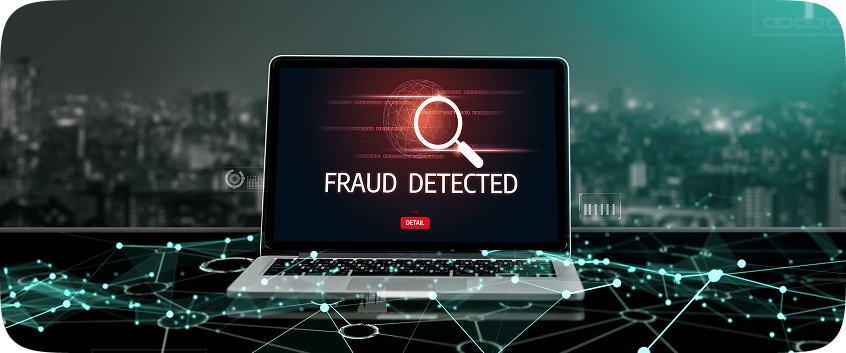
Stop Cyber Attacks Early with AI: 5 Simple Ways to Detect Threats Fast
1 Sep 2025
|
5 min read
Written by

Khushi Gupta
Table of contents
Cyber attacks are no longer rare events. From data breaches that compromise customer trust to ransomware attacks that halt entire operations, the impact on businesses and individuals is severe. In today’s hyperconnected world, reacting after an attack is simply too late. This is where AI in cybersecurity is transforming the game. With its ability to learn patterns, analyze massive datasets, and spot unusual behavior, AI enables early threat detection that stops attacks before they cause damage.
This blog explores how AI is driving cyber attack preventionand shares five simple, practical methods businesses can use today to detect threats fast.
Why Early Threat Detection Matters

The cost of a cyber attack can be devastating. Beyond financial loss, companies risk reputation damage, regulatory penalties, and customer churn. Traditional systems often struggle to keep up with the scale and complexity of modern threats.
AI-powered security offers a better path. By analyzing patterns in real time, AI can uncover hidden risks before they escalate. This is critical when it comes to challenges like zero-day threat detection, where attackers exploit vulnerabilities that security teams have never seen before.
Real-Time Threat Detection: A New Standard - Real-time monitoring is one of the biggest advantages of AI in cybersecurity. Instead of relying on manual reviews, AI systems analyze traffic and user activity instantly. The moment a suspicious login attempt or irregular data transfer occurs, alerts are triggered. This real-time threat detection helps organizations contain attacks before they spread, minimizing both financial and reputational impact.
How AI Enhances Cybersecurity
AI has moved from being an optional add-on to becoming the backbone of modern defense strategies. At its core, AI-powered security works by using advanced algorithms to analyze network activity, user behavior, and system data at scale.
Machine learning cybersecurity
These models continuously learn from data, adapting as attackers change tactics.
Anomaly
detection AI
This technology identifies deviations from normal behavior, like unusual login times or irregular file transfers.
Faster and more accurate
Unlike manual monitoring, AI-driven security solutions operate 24/7 and reduce false positives, ensuring teams focus on real risks.
By combining automation, predictive modeling, and global threat feeds, AI makes it possible to outpace attackers and respond to threats before they spread.
5 Simple Ways to Detect Threats Fast with AI

1. Leverage AI Threat Detection Tools
AI threat detection tools monitor network traffic in real time, scanning for unusual activity. These systems continuously adapt to new patterns of attack.
- Example: Platforms like Darktrace or CrowdStrike use AI to spot hidden risks.
- Benefit: Early alerts help security teams stop potential breaches before data is compromised.
2. Implement Anomaly Detection Systems
Deploying anomaly detection AI helps identify behaviors outside normal patterns. For example, an employee accessing sensitive files at 3 a.m. could trigger an alert.
- This method goes beyond static rules, learning from real behavior over time.
- It reduces the risk of insider threats and compromised credentials going unnoticed.
3. Automate Threat Intelligence Analysis
AI can process enormous volumes of cyber threat intelligence faster than human analysts. Instead of manually scanning feeds, AI prioritizes risks automatically.
- Example: AI systems analyse global data to highlight the most pressing vulnerabilities.
- Result: Faster insights mean stronger defenses with fewer resources.
4. Enable Real-Time Monitoring with AI
With real-time threat detection, AI systems can instantly alert administrators when an attack is underway.
- Example: Detecting phishing attempts in employee inboxes before they spread.
- This enables proactive response, reducing the likelihood of downtime or customer impact.
5. Use AI for Zero-Day Threat Detection
Zero-day threat detection is one of the hardest challenges in cybersecurity. Attackers exploit vulnerabilities unknown to vendors or IT teams.
AI models analyze historical attack data and predict possible future patterns. By flagging suspicious activity early, businesses can stop exploits before they escalate into a breach.
Benefits of AI-Driven Cybersecurity

AI-powered cybersecurity automation offers clear advantages:
- Speed: Threats are detected in seconds instead of hours.
- Accuracy: Reduced false alarms let teams focus on true risks.
- Scalability: AI handles massive data volumes across networks.
- Cost savings: Preventing cyber attacks reduces downtime, fines, and recovery expenses.
In short, AI-driven cybersecurity solutions not only strengthen defenses but also make protection easier to manage for businesses without deep technical expertise.
Conclusion
The reality of today’s digital landscape is simple: attacks are inevitable, but damage is not. By adopting AI in cybersecurity, businesses gain the power of early threat detection and proactive cyber attack prevention. From anomaly detection to real-time monitoring and zero-day defense, AI makes it possible to detect and stop threats before they become disasters.
Now is the time to act. Start exploring AI-powered security tools or consult trusted experts to secure your systems. Don’t wait for an attack to force your hand implement AI-driven protection today.
AI cybersecurity
Threat detection
Cyber attack prevention
Zero-day threats
Anomaly detection
Real-time monitoring
AI threat tools
Cyber threat intelligence
Security automation
Network protection